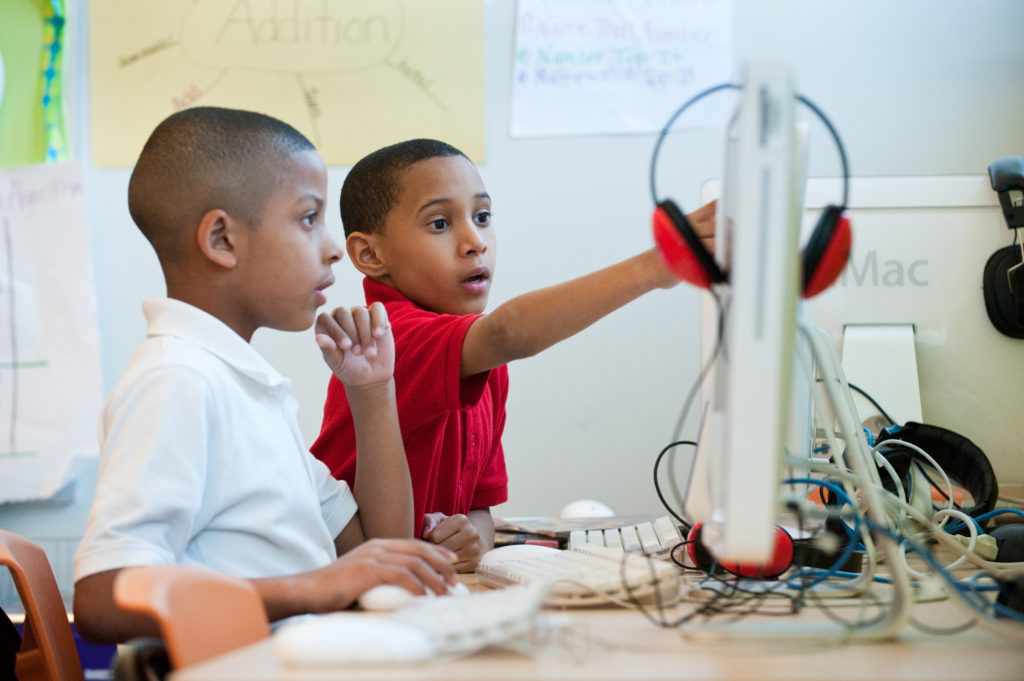
It’s still summer, but I’m thinking ahead to winter. I’m picturing writing workshop time mid-way through the year: Students are busy at the computers, working with an intensity that’s balanced by smiles and the occasional excited whisper, “Did you see my comment yet?” Each student is fully engaged in writing comments that provide helpful feedback on their classmates’ writing and I am just where I want to be at this time in the school year: being a guide on the side.
I’m thinking about winter now because I know that if my fourth graders are to collaborate productively like this at mid-year, I have to start teaching the process of giving each other feedback on their writing at the beginning of the school year. I teach them to give feedback in person first. Then, halfway through the year, once they’ve honed their “offline” skills of giving meaningful and respectful feedback, I introduce the option of giving feedback “online,” which often re-energizes them in this work.
Whether they do so in person, in writing, or online, I find the following strategies are essential to supporting students’ success in giving constructive feedback:
I use the Responsive Classroom technique of Interactive Modeling to help students become successful with asking questions and making comments.
For example, the first time a student shares at Morning Meeting, I work in an Interactive Modeling lesson on how to ask respectful questions and offer comments. I do the same after a student shares about a piece of writing during language arts.
When it comes time to begin giving written feedback on work online, I again use Interactive Modeling to show how the kind of respectful, purposeful questioning and commenting they had been practicing applies here as well.
Students observe as I read my partner’s writing and think aloud for them about what he did well. After I type my comment, which I project for the class to see, they share what they noticed about it: “You said something that was positive about their work” and “Your feedback was about what we’re learning, like punctuation.” Everyone then practices giving the same kind of feedback to their partners.
I also explicitly teach students through Interactive Modeling how to ask clarifying questions and provide constructive criticism when needed. Posting anchor charts of specific questions, such as “Can you explain what you mean here?” or sentence starters, such as “I think you might have meant . . . ,” is also a helpful teaching tool.
In September, students collaborate to create class rules that guide our daily interactions all year long. In January, when it’s time to talk about how we would provide feedback to one another online, I refer back to our rules and ask the students to think about how our rules connect to communicating online.
Students comment that “‘Respect Everyone’ means that someone worked hard on their writing and we need to be kind even if they made a mistake or we don’t understand something” and “‘Be Kind’ is like saying a nice comment about your partner’s work.” The students see a clear connection between the ideals they envisioned in our rules and their work of giving feedback online.
It’s not enough for me to do an Interactive Modeling once or twice of how to give helpful feedback. I have to continuously show by example and create a climate in which this kind of language is the norm.
Just as I give feedback that’s clear and specific when I reinforce students’ positive interactions with one another, I do the same when I point out strengths in their writing. Whether I’m conferring with a student in person or adding notes to their draft, when a student uses a strategy they’ve been learning, I point it out. For example, “You used dialogue. That makes it even more interesting to the reader and helps us get to know your characters more.”
I also make it a habit to demonstrate constructive criticism. For instance, when students write something confusing or vague, I ask, “Can you be more specific here?” or “Maybe an example would help.”
Over time, students start to internalize this kind of language and begin using it themselves with their writing partners.
While writing workshop can be challenging for some students, teaching them the skills for it slowly and deliberately, starting from the beginning of the year, means they have a much greater likelihood of success. With appropriate scaffolding, writing workshop can be a dynamic and energizing time for all students.
Michelle Gill teaches at Garfield Elementary School in Springfield, Virginia. She is a Responsive Classroom consulting teacher.